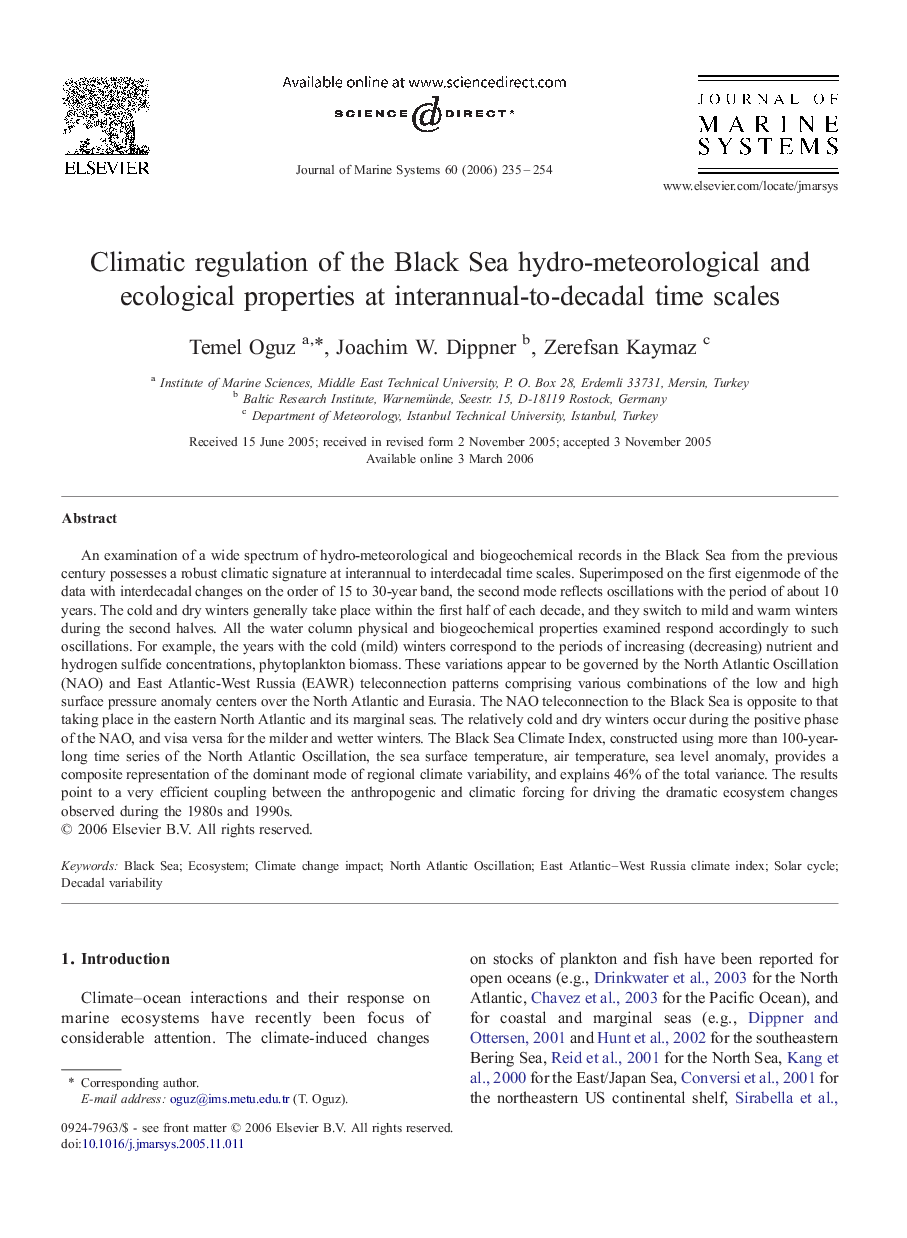| کد مقاله | کد نشریه | سال انتشار | مقاله انگلیسی | نسخه تمام متن |
|---|---|---|---|---|
| 4549410 | 1627366 | 2006 | 20 صفحه PDF | دانلود رایگان |

An examination of a wide spectrum of hydro-meteorological and biogeochemical records in the Black Sea from the previous century possesses a robust climatic signature at interannual to interdecadal time scales. Superimposed on the first eigenmode of the data with interdecadal changes on the order of 15 to 30-year band, the second mode reflects oscillations with the period of about 10 years. The cold and dry winters generally take place within the first half of each decade, and they switch to mild and warm winters during the second halves. All the water column physical and biogeochemical properties examined respond accordingly to such oscillations. For example, the years with the cold (mild) winters correspond to the periods of increasing (decreasing) nutrient and hydrogen sulfide concentrations, phytoplankton biomass. These variations appear to be governed by the North Atlantic Oscillation (NAO) and East Atlantic-West Russia (EAWR) teleconnection patterns comprising various combinations of the low and high surface pressure anomaly centers over the North Atlantic and Eurasia. The NAO teleconnection to the Black Sea is opposite to that taking place in the eastern North Atlantic and its marginal seas. The relatively cold and dry winters occur during the positive phase of the NAO, and visa versa for the milder and wetter winters. The Black Sea Climate Index, constructed using more than 100-year-long time series of the North Atlantic Oscillation, the sea surface temperature, air temperature, sea level anomaly, provides a composite representation of the dominant mode of regional climate variability, and explains 46% of the total variance. The results point to a very efficient coupling between the anthropogenic and climatic forcing for driving the dramatic ecosystem changes observed during the 1980s and 1990s.
Journal: Journal of Marine Systems - Volume 60, Issues 3–4, May 2006, Pages 235–254